First, the definition: Fortified wine is a wine fermentation fortified with a clear grape spirit or brandy to increase the shelf life and amp up the alcohol content. Sometimes sugars and botanicals are added to modify flavor profiles and deepen textures.
Ports, Sherries, Vermouths, Madeiras all have this sense of being from a far off place. These are the sorts of bottles you get for a long voyage out beyond the horizon, because you know it’ll last and add a sweet end to a hard day. The bottles are always dark and heavy, their corks musty and dyed a dark red, and the contents inside take the edge off far faster than a mere glass of wine or mug of beer. Fortified wines bridge the world of alcohol between the easy low alcohol supping of wine and beer and the partying and numbing qualities of the spirits.
Below is your gateway to understanding the various types of fortified wines on the market and what makes each of them special. Once you open the door to this deliciously dark subset of alcohol, you’ll find a whole new world of tipple to explore and enjoy wherever you roam.
https://www.instagram.com/p/BPWAv9Tgo8k/
THE THREE Ms
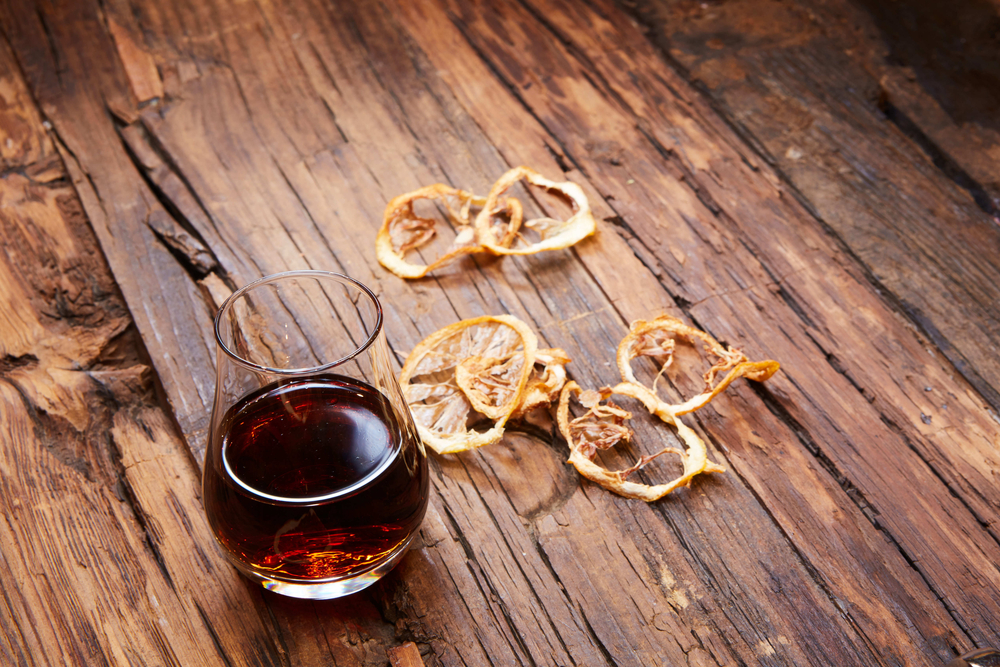
Madeira, Marsala, and Moscato de Setúbal are very similar in production. The biggest difference are the grapes used and towns they are produced in. Madeira is made on Portugal’s Madeira islands. Marsala comes from Marsala, Sicily. Moscato de Setúbal is made on the Setúbal peninsula just south of Lisbon, Portugal. What makes these wines different, besides the locale and the history? Not a whole lot.
Marsala already existed in Marsala before an English merchant named John Woodhouse showed up and brought the local tipple to the rest of the world. Marsala is made in a very similar way to Sherry and is likely most associated with cooking outside of Sicily. It’s classified by its sugar content from secco (low) to semisecco and sweet (very high in sugar). From there Marsala is labeled according to color and time it spent in the barrel. Fine means barreled for one year and Vergine e/o Soleras Stravecchio e Vergine e/o Soleras Riserva means it has been barreled for at least ten years.
Moscato de Setúbal is extremely similar to Port with the exception that it’s always produced with the Moscato grape and in Setúbal. The wine is generally barreled for five-six years and produces a very specific apricot taste, making it a great dessert wine. The wines that are barreled closer to ten years tend to lean into caramel and nuts on the taste.
Madeira was a hugely popular wine in Revolutionary America. It was one of the biggest imports from Europe to the Americas in the 1700s and the British seizing John Hancock’s ship full of Madeira sparked riots in Massachusetts that led to war. Madeira was also the wine used to toast the Declaration of Independence and was the drink of choice on the floor of the first Supreme Court.
This fortified wine has a very unique taste to it. The islands that produce it have a sub-tropical climate with lots of rain. It makes it great for grape growing and natural sugar production on the vine. The lion’s share of Madeira is made with the Negra Mole grape. What makes Madeira stand out is the estufagem aging process. This barreling technique is meant to mimic the effect of a long sea voyage in tropical climes. Winemakers accomplish this by warming up the wine in the barrels or steel vats for anywhere from 90 days to years. This gives you a very mellow and high alcohol wine that has hints of the tropics cooked into the liquid.
Madeira is classified by sugar content as well. Sercial is the lowest in sugars, and thereby driest. Verdelho, Bual, and Malmsey are the next designations with the latter being the sweetest variety. Generally Madeira will also be labeled by how long it’s spent in the barrel with Reserve being the five year mark and Vintage or Frasqueira meaning it’s been in the barrel for over 19 years.
https://www.instagram.com/p/BOyXvLFhTnJ/
COMMANDARIA
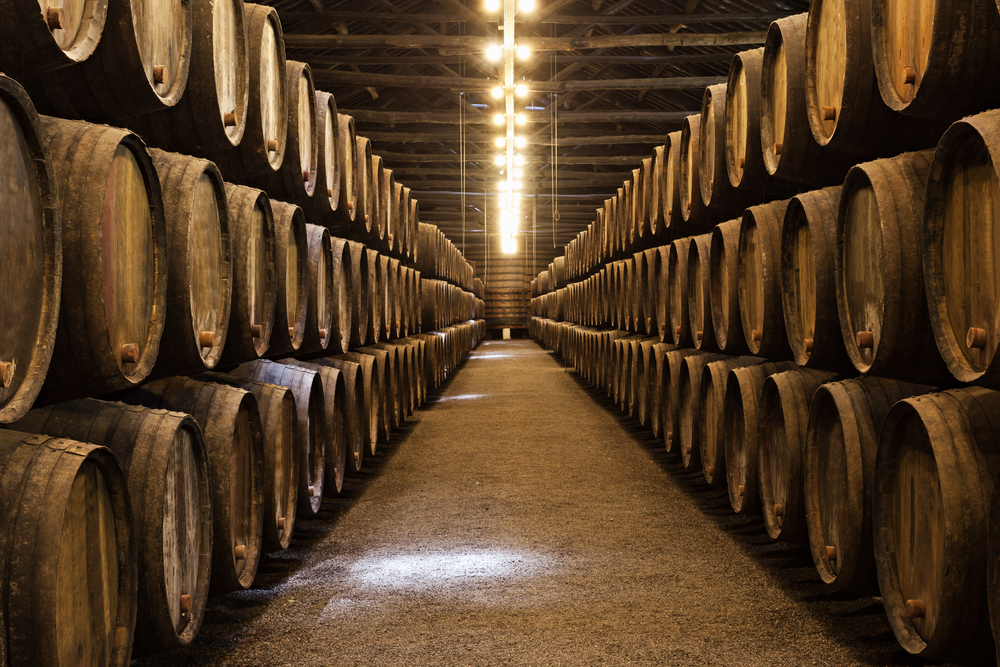
Hailing from the island of Cyprus, Commandaria is one of the oldest wines we know of. The wine was made famous in 800BC when the Greek poet Hesiod mentioned the wine specifically in his poem Works of Days. The wine was latter popularized during the Crusades by Richard Lionheart and that’s where the Commandaria name derives.
Commandaria is a higher alcohol content wine that owes a lot to the sugars involved through its unique processing. It’s often used as a dessert wine and rarely used in cooking (that doesn’t mean you can’t). It’s was so popular during the Crusades that the Knights Templar put their Cypriot headquarters near the vineyards, so they could have the tipple on demand 24/7. It’s a smooth, sunny, albeit sweet drink that goes down very easily.
Commandaria can only be made with two grapes local to Cyprus — the Xynisteri and Mavro. The grapes are left on the vine until the sugars are as high as possible, then they’re picked and laid out in the summer sun. This dries out the grapes and amps the sugars up to 11 before the must (that’s the squashed grape juice) is made and the fermentation begins. From here, a 15 percent wine is made via standard fermentation. At the very end of the process a 95 percent grape distillate is added to the wine to fortify it. This fortifying process gives Commandaria an ABV between 15 and 20 percent (depending how much of that grape distillate is added). The wine is then aged for 4 years in oak barrels before bottling.
SHERRY
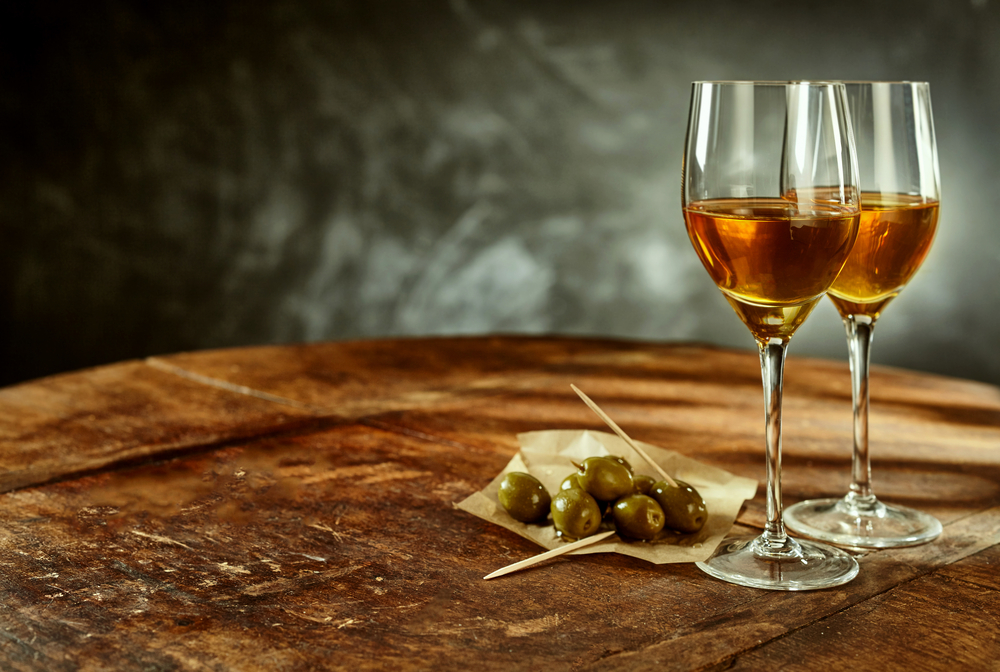
Sherry has to be from Jerez (a place that’s been making wine since 1100BC). In fact Sherry is a bastard Anglicization of Jerez, because the English back in the day evidently couldn’t pronounce that word. It’s always made from white Palomino grapes. Unlike other fortifications, the wine is allowed to completely ferment (allowing all the sugars to turn into alcohol) before brandy is added to the mix. Then they’re barreled and allowed to get to a ABV between 15-17 percent before bottling. All Sherrys are barreled using the Solera method. This means that all ages are blended to make a final product. This is also called fractional blending and gives the product a whiskey-like texture and color. As the wines age and mix, a yeast shield forms over the liquid and protects the wine from evaporation.
Sherry designates into several varities. Fino, Manzanilla, Amontilladom, Palo Cotrado, and Oloroso will have spent the least time in the barrel and have the lowest sugar content — ranging from 15 percent ABV to 22 ABV with Fino the lowest and Oloroso the highest. Next comes Dry Sherry which will have a slightly higher sugar content and a ABV range between 15-22. Pale Cream and Medium are the next step on the sugar-content scale. Next comes Medium and Cream which come in as semi-sweet. Dulce and Moscatel tend to be very sweet and are often used as dessert wines. And the sweetest version is Pedro Ximénez which generally has a sugar content of 212 grams per liter. That’s 7.4 ounces of sugar (or a cup) in about two pints of fluid. By comparison, a can of Coke has about 48grams of sugar. That’s why Sherry is always served in a very small flute.
PORT
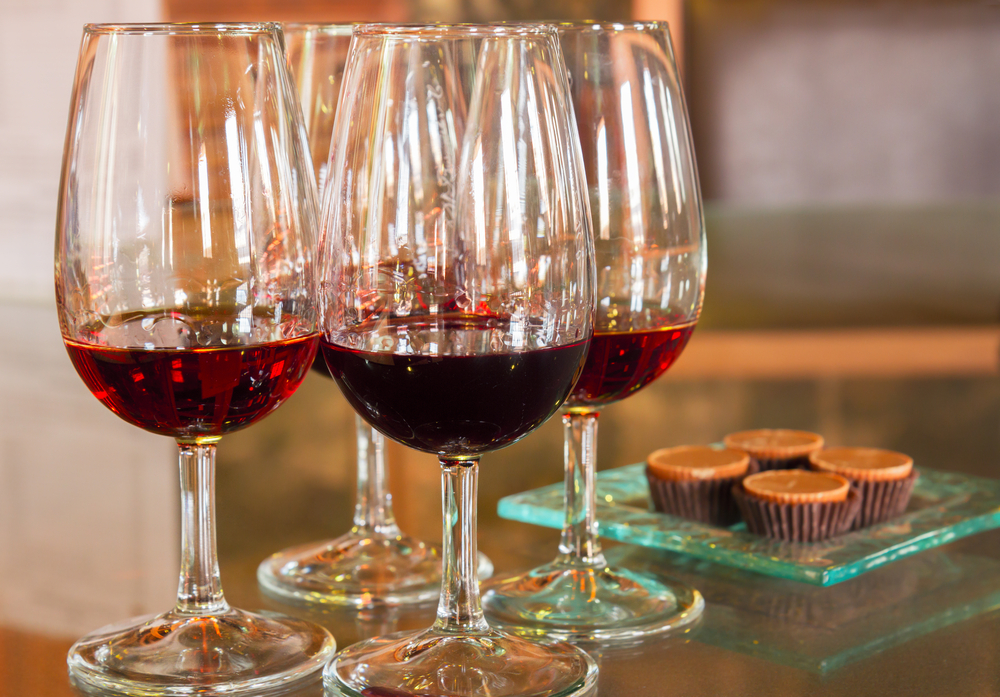
Port is from Porto. However, Port is one of the local designations that has lost a bit of its meaning since it is produced around the world and still called Port, or some variation — like, Porto, Oporto, or Vinho du Porto. Anyone can make Port and call it Port. Which is fine to an extent, but let’s focus on the wines from Porto here.
Where other fortified wines add brandy or a pure grape distillate to stop fermentation or fortify after fermentation, Port uses aguardiente to stop the fermentation process. This leaves the residual sugars in the wine, amping up the sweetness across the board. Aguardiente is a distilled wine from undrinkable product, so it’s an upcycled product that’s a bit like white lightning.
Most Port comes from the Duoro Valley of Portugal — after being exported from Porto and given the appellation designation in 1756. Given that Port is made with pretty much any grape and fortified with a unusable wine distillate, Port could be made anywhere. Today you can get Port from America, Australia, South Africa, and most anywhere else that grows grapes.
Port varieties are wide ranging. The easiest entry point is Tawny Port. Tawny Port is aged in a barrel and the liquid is allowed to evaporate until a brownish wine is left that’s semi-sweet and nutty in flavor. It’s something that can be paired easily with any food course, though it’s most often associated with dessert. Next comes Colheita, Garrafeira, Ruby, Reserve, Rose, White, LBV (Late Bottle Vintage), Crusted, Vintage, and Single Quinta Vintage. Each port gets more and more specific by blending fewer grapes to adding in more refined grape distillates. Plus, the ‘vintage’ varieties all have to come from a specific estate.
The wines aren’t necessarily sweeter than each other, just more refined and matched with a deeper flavor profile, given which grape was used from which estate and how long tit was left in the barrels.
VERMOUTH
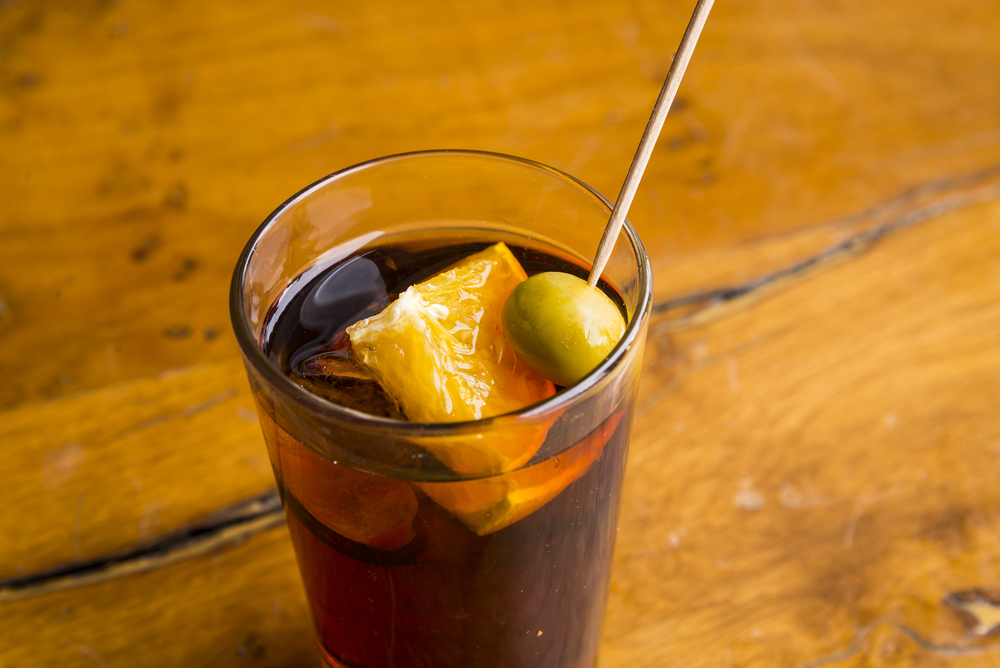
Vermouth is the biggest outlier in the fortified wine world. Fortifying wine with herbs and botanicals goes back in China and India for thousands of years. It’s theorized that the Greeks learned these ways as their armies marched further east and brought the practices back to Europe. Either way, the name is believed to come from the Indian version of a Wormwood Wine that the Germans called Wermut (literally Wormwood), which was then pronounced Vermouth in French.
For most of Vermouth’s modern history there have been two major varieties — pale, dry, and white or dark, reddish, and sweet. White Vermouth is a white wine that is fortified after fermentation with a grape distillate and then barreled with botanicals to flavor the drink. Red Vermouth generally takes the same process but adds in either sugar cane syrup or sugar beet syrup to add a heavy layer of sweetness and dark color to the whole drink. Each Vermouth is stirred periodically while it’s still in the barrel to draw out the botanical flavors. Caramel is also added to Red Vermouths to ensure that ruddy complexion.
In America, vermouth is mostly found in cocktails like the Manhattan and the Martini. However, artisanal vermouths are becoming more popular across Europe and the drink is making a huge comeback as an aperitif. France, Spain, and Italy still dominate the markets and brands with Cinzano, Martini & Rosso, Carpano, Noilly Prat, Dolin, and a mess of smaller stills in almost every region that produces wine. More recently, bars across Spain, Italy, and France have begin to barrel their own vermouths and have them sitting at the bar in huge vats with the botanicals still steeping inside, providing you with a vermouth that you’ll literally only get at that particular bar.
https://www.instagram.com/p/BODIe3hF8_p/
BUDGET WINES
MD 20/20, Ripple, and Boone’s Farm are all versions of fortified wines. These “flavored” fortified wines are usually made with the cheapest fruit juices, grain alcohols, high fructose corn syrup, and artificial coloring to keep the cost to the consumer incredibly low. This has led to these wines being associated with the homeless population and broke college kids.
These wines came to prominence during Prohibition in America as a super cheap and easy way to get drunk fast. So pervasive was the proliferation of these wines that the term wino was coined to describe the homeless men and women who relied on the drink. This ostracizing continues to this day. Cities continue to ban the sale of these fortified wines in low income neighborhoods to fight public drunkenness — Seattle having done so as recently as 2005.
Still, the wine has permeated American culture as a mainstay in songs from Guns ‘N Roses Night Train to George Jones’ Wild Irish Rose to Jack Kerouac trading hobos bottles of Thunderbird for their stories as they rode train cars across America in the Lonesome Traveler.
https://www.instagram.com/p/BLw_z2BBhud/
https://www.instagram.com/p/BJO44Jeg3M1/






